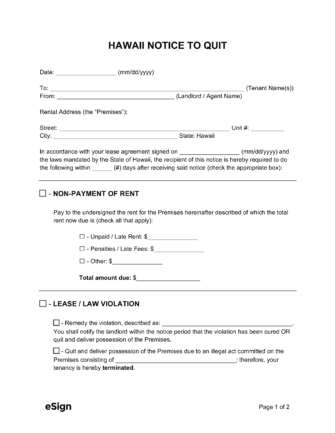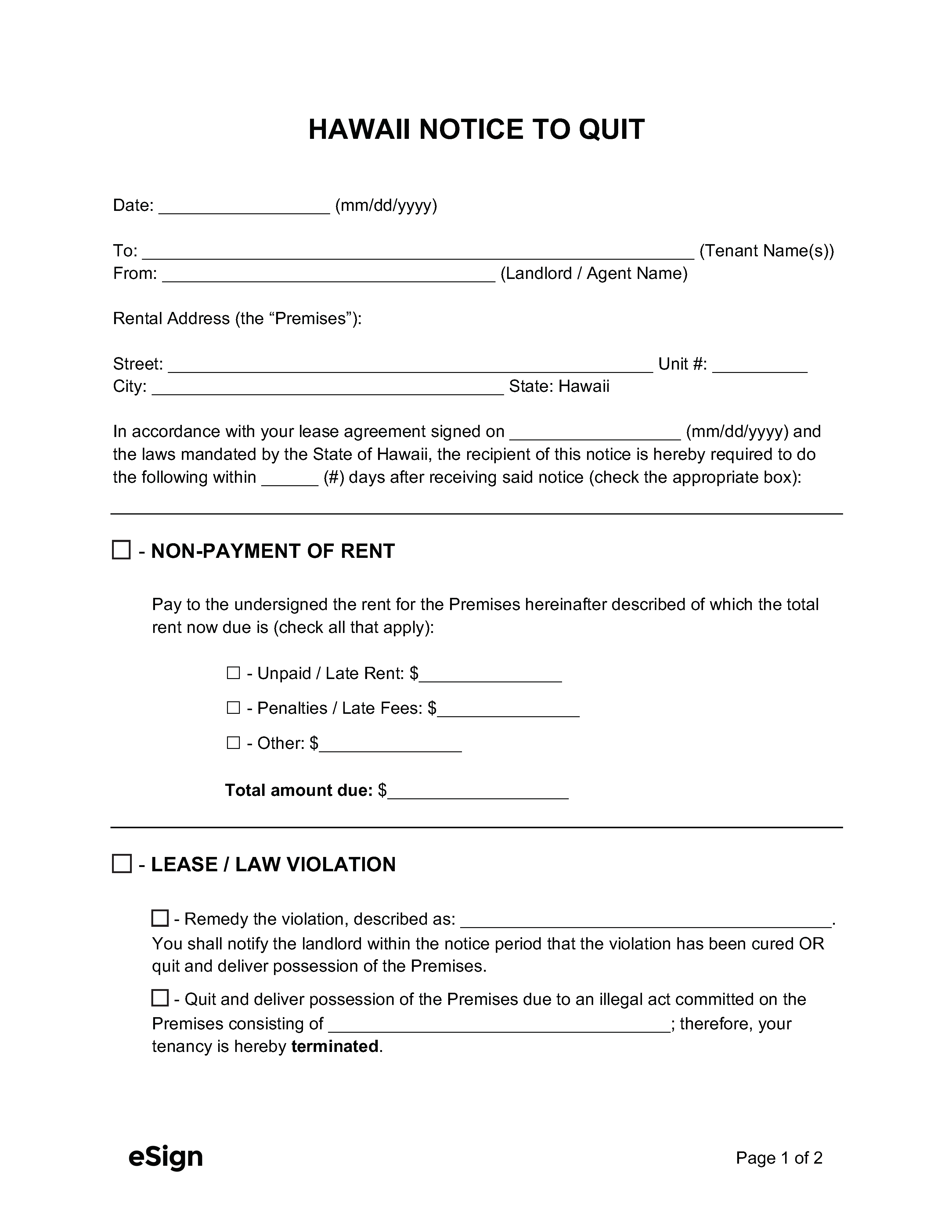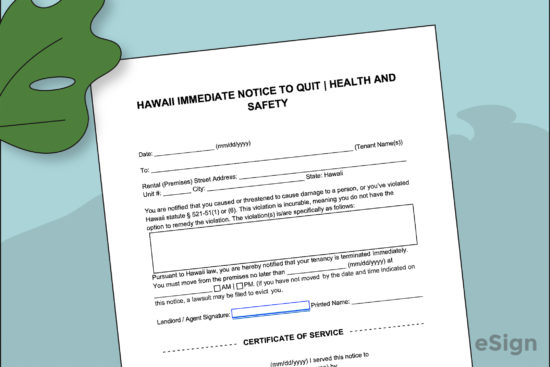Eviction Notices: By Type (6)

5-Day Notice to Quit | Non-Payment – Informs a tenant that they failed to pay rent on time and have five days to pay or leave.
Download: PDF, Word (.docx), OpenDocument
|
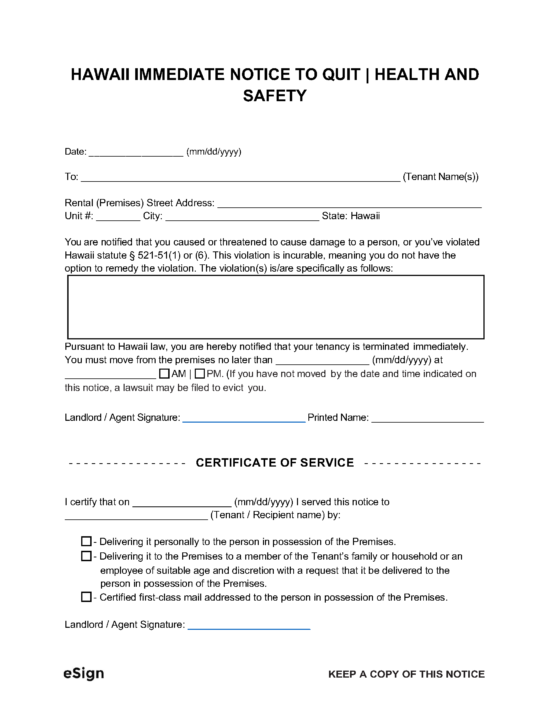
Immediate Notice to Quit | Health and Safety – Immediately terminates a tenant’s lease if they have committed a serious breach of contract affecting health and safety. Download: PDF, Word (.docx), OpenDocument |
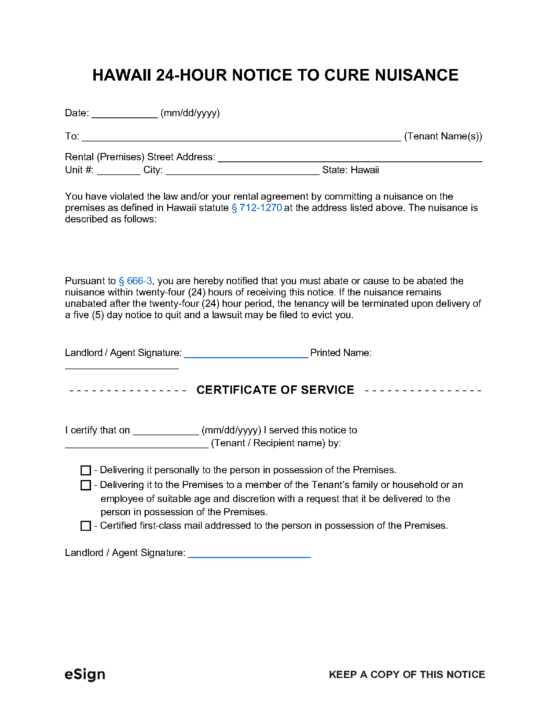
24-Hour Notice to Cure | Nuisance – Notifies a tenant that they have committed a public health and morals nuisance and have 24 hours to desist.
Download: PDF, Word (.docx), OpenDocument |
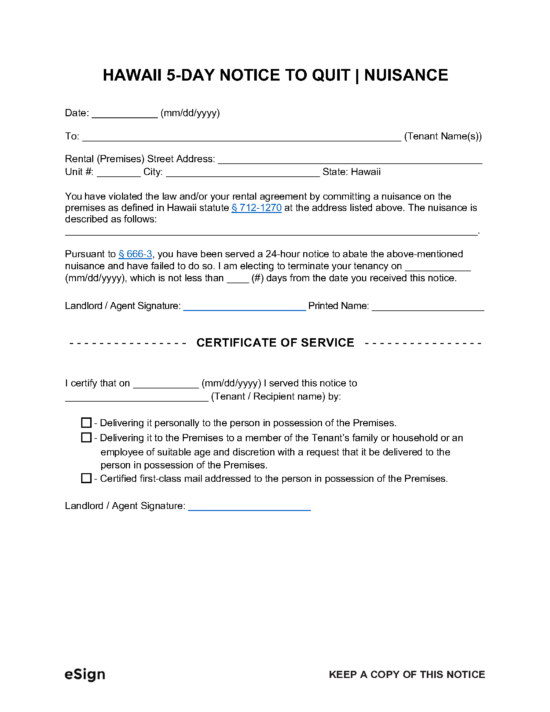
5-Day Notice to Quit | Nuisance – Informs a tenant that they failed to abate a health/morals nuisance and must vacate the property within five days.
Download: PDF, Word (.docx), OpenDocument |
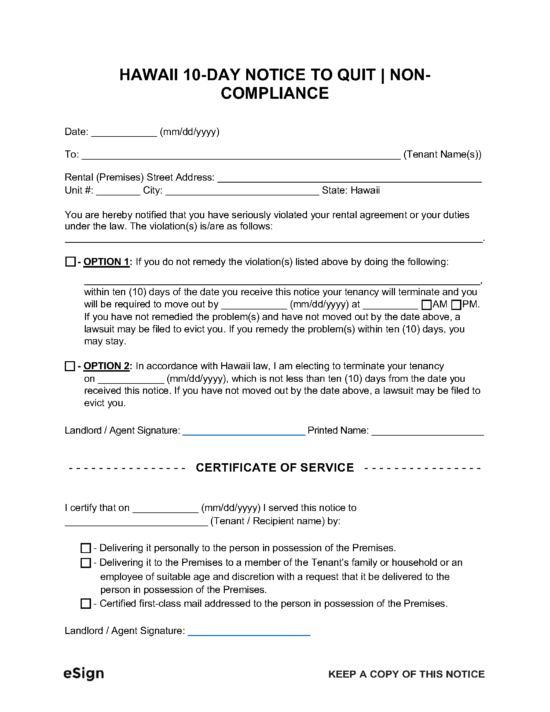 10-Day Notice to Quit | Non-Compliance – Served on a tenant who has committed a lease violation and must correct the violation or their lease will be terminated. 10-Day Notice to Quit | Non-Compliance – Served on a tenant who has committed a lease violation and must correct the violation or their lease will be terminated.
Download: PDF, Word (.docx), OpenDocument
|
 Notice to Terminate | Month-to-Month Lease – Can be used by a landlord or a tenant to terminate a periodic tennacy. Notice to Terminate | Month-to-Month Lease – Can be used by a landlord or a tenant to terminate a periodic tennacy.
Download: PDF, Word (.docx), OpenDocument |
Notice Requirements
- Grace Period for Rent – Not mentioned in state statutes.
- Non-Payment of Rent – 5 days.[1]
- Lease Non-Compliance – 10 days.[2]
- Periodic Tenancy Termination – 28 days (tenants), 45 days (landlords).[3]
- Nuisance (Offense Against Public Health/Morals) – 24 hours.[4]
- Intentional Damage to Property – Immediate.[5]
How to Evict a Tenant in Hawaii
Step 1 – Notify Tenant
To start the process, the landlord must download and complete one of the following notices and deliver it to a tenant who has violated their lease agreement:
Step 2 – Failure to Comply

If the tenant doesn’t comply with the notice, the landlord can file for summary possession, also known as an eviction suit. The landlord must file a Complaint and Summons with the district court in the circuit (island) where the property is located.
- O’ahu (1st Circuit) – Complaint | Summons
- Maui, Moloka’i, and Lana’i (2nd Circuit) – Complaint | Summons
- Hawai’i (3rd Circuit) – Complaint | Summons
- Kaua’i (5th Circuit) – Complaint | Summons
Once the appropriate form has been completed, the landlord must attach a copy of the lease agreement and notice to quit that was served on the tenant and file all papers with the court clerk.
Step 3 – Deliver Documents to Tenant
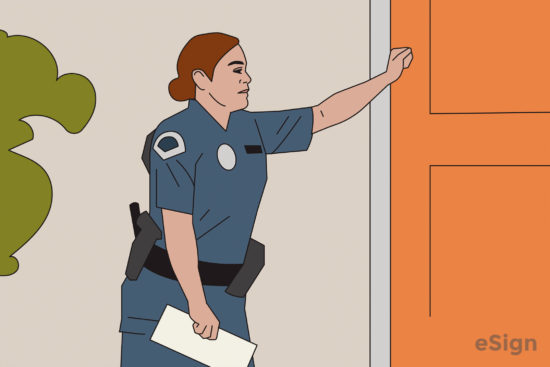
Step 4 – Tenant’s Answer

Once the tenant has been served, they have five days to answer the Complaint. The tenant must appear before the court on the date specified on the summons form to answer the complaint. Failure to do so could result in a default judgment against them.
To obtain a default judgment, the landlord can file the appropriate Motion for Default Judgment form below. If the judge approves the motion, the tenant must vacate the property and pay any damages or past-due rent owed to the landlord.
- O’ahu (1st Circuit) – Motion for Default Judgment
- Maui, Moloka’i, and Lana’i (2nd Circuit) – Motion for Default Judgment
- Hawai’i (3rd Circuit) – Motion for Default Judgment
- Kaua’i (5th Circuit) – Motion for Default Judgment
Step 5 – Pre-Trial and Trial (If Applicable)

Step 6 – Writ of Possession

- O’ahu (1st Circuit) – Writ of Possession
- Maui, Moloka’i, and Lana’i (2nd Circuit) – Writ of Possession
- Hawai’i (3rd Circuit) – Writ of Possession
- Kaua’i (5th Circuit) – Writ of Possession
Court Forms + Resources
Forms
O’ahu (1st Circuit)
Maui, Moloka’i, and Lana’i (2nd Circuit)
Hawai’i (3rd Circuit)
Kaua’i (5th Circuit)
Resources
